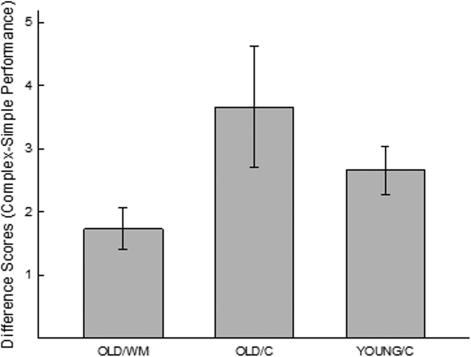Figure 2.
Selective attention. Animals performed odor discrimination and visual discrimination in each of two distinct contexts. After attaining superasymptotic (and near errorless) performance on each of these tasks, the odor and visual cues were simultaneously presented in the context that signaled the visual discrimination. This constituted a mouse analog of the human Stroop test, where task-relevant distracters must be ignored in order for the animal to perform efficiently. The errors across four test trials (relative to errors in the simple discrimination) are plotted as a function of group. Lifelong working memory training facilitated selective attention in aged animals.

